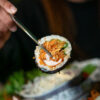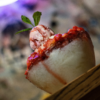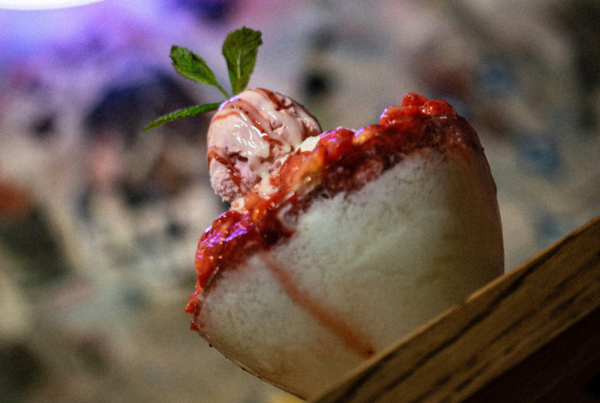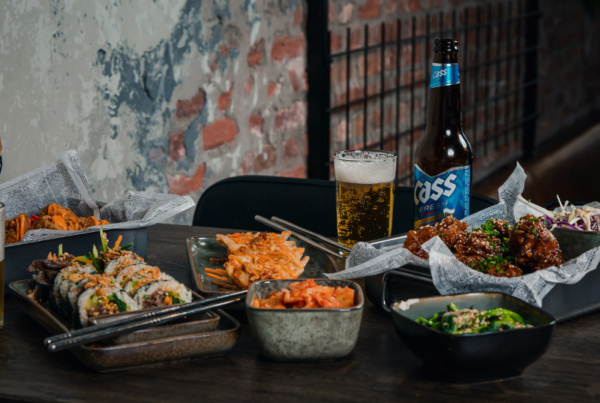Banchan or side dishes are an important part of Korean cuisine. It not only enhances the flavors of your meal, but it plays a role in the presentation of meals.
What is banchan (반찬)?
A variety of small side dishes within Korean cuisine is referred to as Banchan (반찬). These dishes consist of a diverse lineup of ingredients, such as vegetables, meat, fish, rice, tofu, and more. Banchan is generally served alongside rice, soup, and the main dish of the meal. The quantity of Banchan dishes provided can vary, and certain restaurants may even offer six or more different Banchan selections.
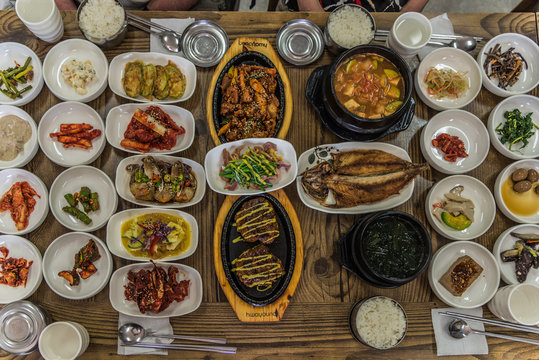
History of banchan
Originating during the mid-Three Kingdom era in the 300s AD, a time marked by significant Buddhist influence and a discouragement of meat consumption, Banchan emerged. During this period, seasonal vegetable focused dishes centered around Korean culinary traditions.
Cultural significance
With strong ties to tradition and culture, Korean side dishes represent the nation’s rich heritage. Passed on from one generation to the next, these very old recipes have survived the trials of time, sustaining the authentic flavors and essence of Korean cuisine. Besides this, banchan reflects the country’s emphasis on communal eating/sharing. Having these side dishes on the table encourages the sense of shared dining that has been embedded in Korean culture for decades.
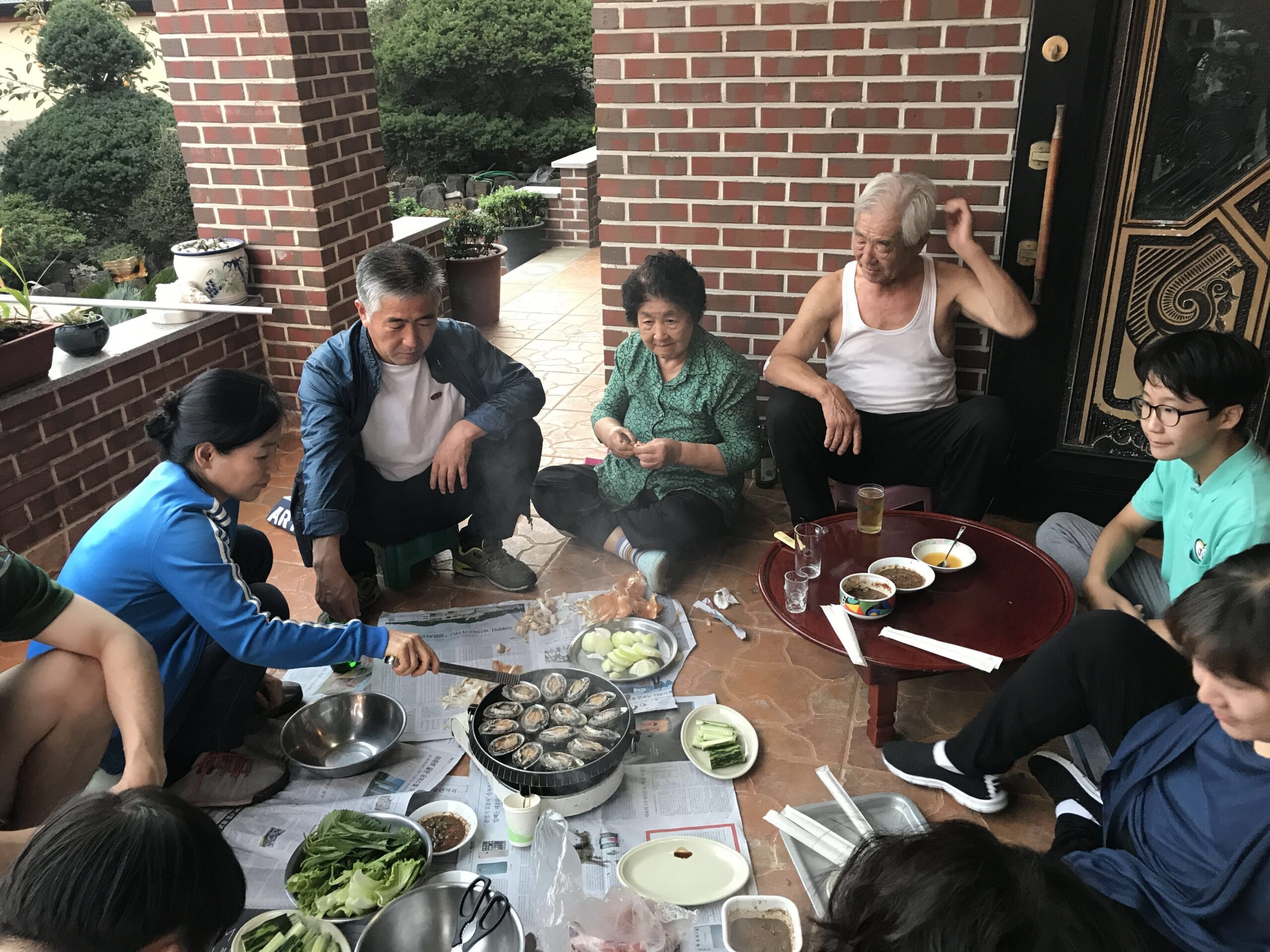
Must-try banchan
There are so many possible banchan’s to make and pair with your meals, but here are some common ones that you might recognize.
1. Kimchi (김치)
A traditional (and probably the most popular) Korean side dish made from fermented vegetables, mainly Napa cabbage and Korean radishes. Kimchi is seasoned with spices such ass garlic, ginger, salt, fish sauce and shrimp paste. Every Korean household has their own version of kimchi but these ingredients are the most standard.
2. Kongnamul (콩나물) or seasoned soybean sprouts
This is also a popular Korean banchan. These sprouts are blanched quickly and seasoned with sesame oil, garlic and soy sauce. This banchan pairs so well with many dishes.
3. Danmuji (단무지) or pickled radish
Danmuji is a bright yellow side dish made from daikon radishes and pickled with vinegar and sugar, making it tangy and sweet! You can see danmuji in most kimbaps or it is sometimes paired with Jjajangmyeon.
4. Kim (김) or seaweed
Kim is seaweed that is dried and roasted to create thin sheets. These savory and crispy sheets are a popular ingredient in Korean cuisine and are used to wrap rice and other ingredients, creating dishes such as “kimbap”!
5. Kkakdugi (깍두기) or radish kimchi
This is a traditional side dish made from cubed radishes, seasoned with a paste made from ingredients like gochugaru (고춧가루) or red pepper flakes, garlic, ginger, fish sauce and salt. The mixture is left to ferment, allowing the flavors to develop a tangy (and delicious) taste!
6. Eomuk bokkeum (어묵볶음) or fried fishcake
This side dish is made of stir-fried fish cakes cooked with vegetables in a savory sauce. It typically involves stir-frying fish cakes with carrots, onions, green onions, along with soy sauce, sugar and gochuchang to give it a light kick.
7. Gamja jorim (감자조림) or braised potatoes
Gamja jorim is a side dish with potatoes braised in a savory and flavorful sauce until it’s tender. This dish involves slicing potatoes into small bite-sized pieces, then cooking it in a mixture of soy sauce, sugar, garlic and sesame oil. These ingredients are simmered together until the potatoes are fully cooked. Yummmy!
8. Myeolchi bokkeum (멸치볶음) or stir-fried anchovies
This side dish is made with dried anchovies a.k.a myeolchi (멸치). These anchovies are stir-fried or sautéed in a sauce with soy sauce, sugar and sesame oil . This dish is savory and slightly sweet, crunchy and umami! It goes particularly with rice.
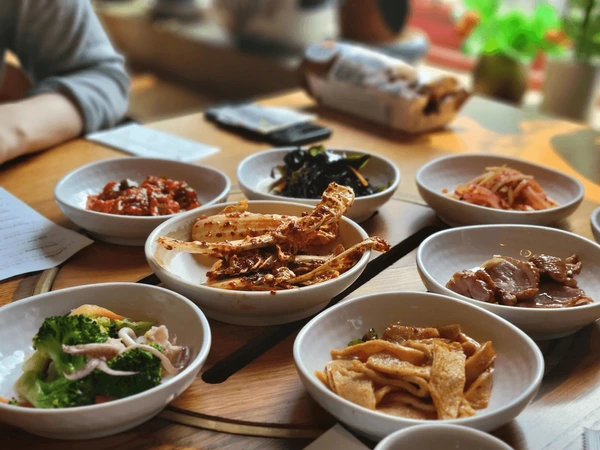
At SOJUBar, we proudly offer a few of these banchans to complete your Korean dining experience! Enhance the flavour of your Korean fried chicken with a bite of kimchi, or pair your hot rice with a side of eomuk bokkeum. You’ll definitely take it to the next level!

